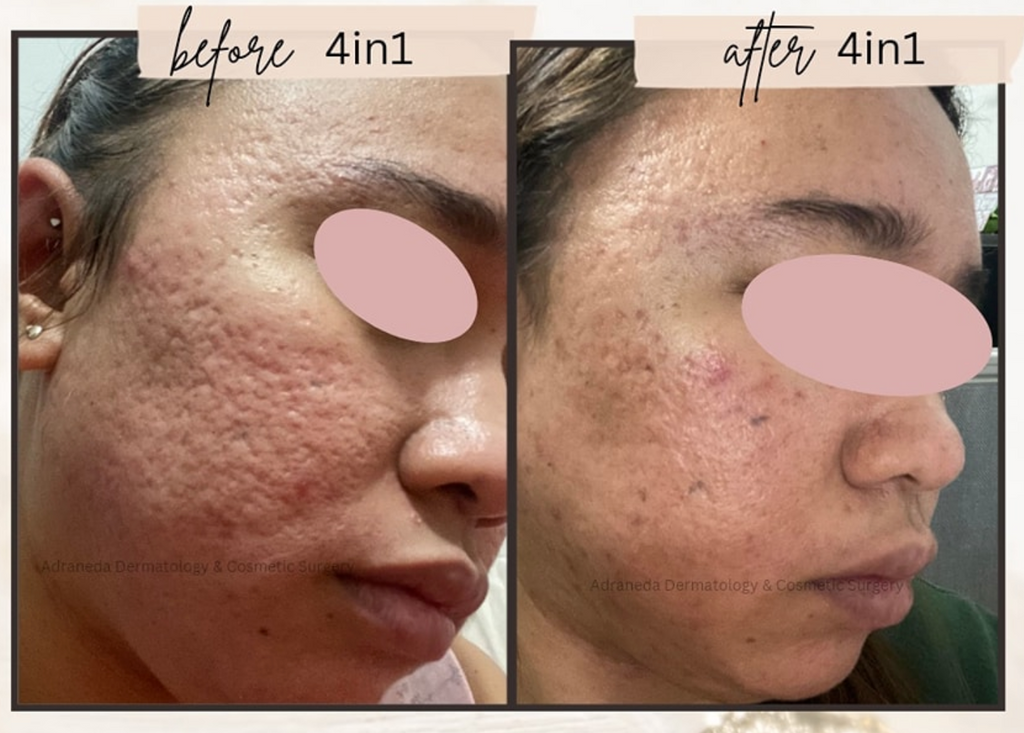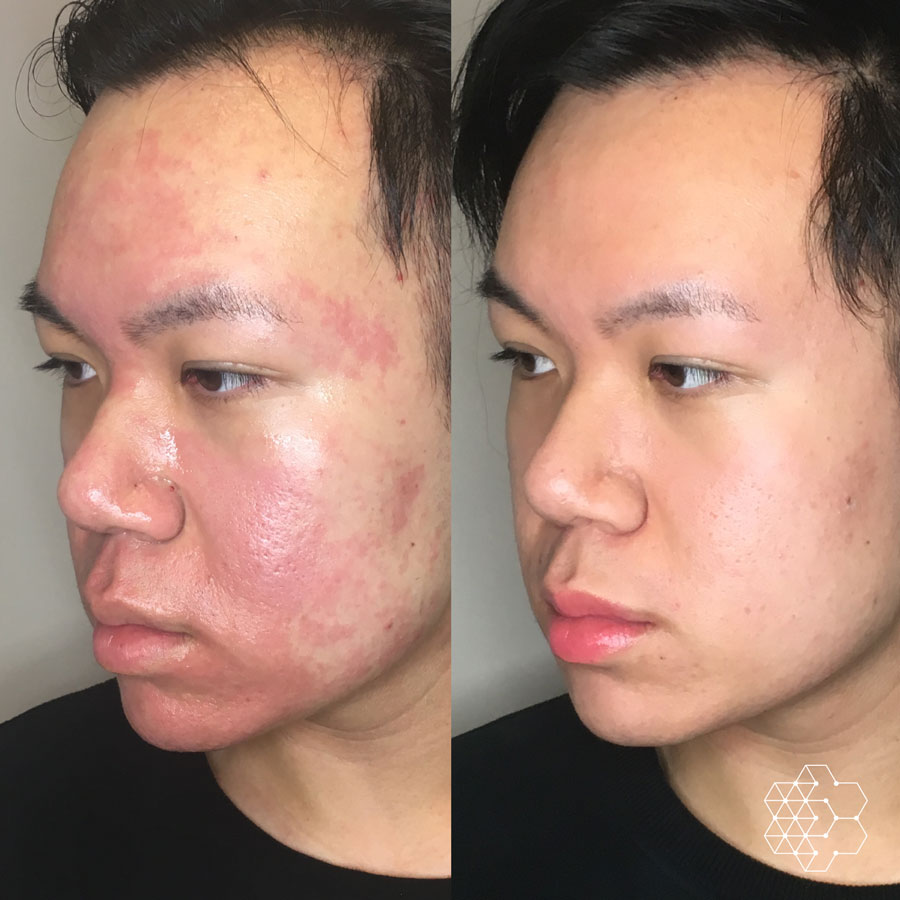Advanced Acne and Acne Scars Treatment: Say Goodbye to Imperfections
Advanced Acne and Acne Scars Treatment: Say Goodbye to Imperfections
Blog Article
A Comprehensive Overview to Handling Skin Problem: Concentrating On the Therapy of Acne Marks
Acne scars represent a significant problem for numerous individuals, usually impacting self-confidence and total skin wellness. Understanding the different kinds of acne scars, such as hypertrophic and atrophic, is vital for efficient administration and treatment.
Recognizing Acne Scars
Recognizing acne scars involves recognizing the complicated interplay in between skin healing and the inflammatory processes that take place throughout acne outbreaks. Acne develops when hair follicles come to be blocked with oil, dead skin cells, and microorganisms, bring about swelling. This inflammatory feedback is vital for combating infection but can also result in damages to the skin's tissue.
When the body attempts to recover itself, it produces collagen, a healthy protein important for skin framework. The quantity and high quality of this collagen can differ, leading to different types of scars. Variables influencing scar development include the extent of the acne, individual skin type, genetics, and the body's recovery response.
In addition, very early treatment in acne treatment can play a pivotal function in preventing scarring. Timely monitoring of outbreaks lessens inflammation and tissue damage, which are important elements in scar growth. Education and learning on correct skin care and therapy choices is important for people prone to scarring. Ultimately, comprehending the underlying mechanisms of acne and its recovery process is vital for reliable administration and avoidance of acne scars.
Sorts Of Acne Marks
The complexity of acne scars can be categorized right into numerous distinctive kinds, each mirroring the underlying skin damages and healing reaction. One of the most usual types include atrophic scars, hypertrophic marks, and keloids.
These marks can better be classified into icepick, boxcar, and rolling scars, each differing in form and depth. Icepick marks are narrow and deep, appearing like small punctures, while boxcar scars have a wider, a lot more angular appearance.
Hypertrophic scars, on the various other hand, are increased and arise from an overproduction of collagen during recovery. These scars may vary in dimension and can sometimes discolor in time but might continue to be popular.
Keloids are a much more serious kind of hypertrophic scarring, prolonging past the original injury site and often needing extra hostile treatment alternatives. Understanding these types is crucial for figuring out one of the most efficient treatment strategy tailored to a person's details mark kind and skin problem.
Topical Therapies

Topical treatments play a critical function in managing acne scars, offering patients a range of choices focused on boosting skin structure and appearance. These treatments primarily focus on advertising skin regrowth, reducing coloring, and enhancing general complexion.
One of one of the most extensively used topical representatives is retinoids, which are derivatives of vitamin A. Retinoids boost collagen manufacturing and speed up cell turn over, aiding to lessen the appearance of marks with time. Additionally, alpha hydroxy acids (AHAs) and beta hydroxy acids (BHAs) can exfoliate the skin, removing dead skin cells and promoting a smoother surface area.
One more reliable category includes topical antioxidants, such as vitamin C, which can assist to lighten hyperpigmentation linked with acne scars while offering anti-inflammatory advantages. In addition, silicone gels and sheets have been shown to moisturize and squash scars, making them much less visible.
Hydroquinone is typically made use of for its skin-lightening residential properties, although it needs to be used meticulously because of possible adverse effects. Including moisturizers that consist of active ingredients like hyaluronic acid can better sustain skin healing and boost structure. For ideal results, it is recommended to speak with a dermatologist for customized therapy suggestions.

Specialist Therapy Options
When it pertains to dealing with much more severe acne marks, clients often turn to professional therapy choices that can supply much more significant outcomes than topical treatments alone. These interventions are usually provided by skin specialists or licensed specialists and consist of different techniques tailored to private skin types and scar seriousness.
One of one of the most usual therapies is chemical peels, which make use of acids to scrub the skin and promote regeneration. This approach can considerably lower the appearance of superficial scars. Microneedling, another efficient alternative, includes producing micro-injuries read more in the skin to boost collagen production, improving appearance and decreasing marks.
Laser treatment is additionally commonly utilized, with fractional lasers specifically targeting marked regions while protecting surrounding skin. This technique can generate impressive enhancements in skin look over several sessions. Additionally, facial fillers are utilized to recover quantity and ravel uneven skin surfaces, offering immediate, albeit short-lived, outcomes.
Lifestyle and Natural Remedy
Integrating lifestyle changes and natural home remedy can play a considerable duty in managing acne marks, matching specialist treatments. Maintaining a well balanced diet plan rich in vitamins, antioxidants, and minerals can promote skin healing - acne scars. Foods high in vitamin C, such as citrus fruits, and those consisting of zinc, like nuts and seeds, promote skin regrowth and assistance minimize inflammation
Hydration is additionally essential; drinking sufficient water keeps the skin hydrated, helping in its all-natural repair procedures. Normal workout boosts blood flow, which can boost nutrient delivery to the skin and improve general skin.
Along with nutritional modifications, incorporating topical natural home remedy can be helpful. Natural ingredients such as aloe honey, tea, and vera tree oil have anti-inflammatory and antibacterial buildings, which may help in minimizing the appearance of scars. Exfoliating the skin with mild scrubs can likewise promote cell turnover, aiding in the fading of scars with time.
Furthermore, developing a read regular skincare routine that includes sun defense is vital, as UV exposure can darken scars. By integrating these way of life adjustments he said and natural home remedy, individuals can enhance their skin's recovery procedure and accomplish a more also skin tone.
Final Thought
Efficient monitoring of acne marks requires an extensive understanding of their kinds and the underlying mechanisms involved in scar development. A mix of topical treatments, specialist treatments, and way of life alterations can significantly boost skin healing and lessen scar exposure.
Understanding acne marks entails acknowledging the complicated interaction between skin recovery and the inflammatory processes that take place during acne outbreaks. Elements affecting mark formation consist of the seriousness of the acne, individual skin kind, genes, and the body's healing feedback.
These scars can even more be categorized into icepick, boxcar, and rolling marks, each varying in form and depth. Icepick scars are slim and deep, appearing like tiny punctures, while boxcar marks have a bigger, much more angular look (acne scars).Effective monitoring of acne scars necessitates a thorough understanding of their types and the underlying mechanisms included in scar formation
Report this page